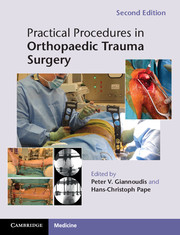2 - Fractures of the scapula
Published online by Cambridge University Press: 05 February 2014
Summary
Indications
The indications for fixation of scapular fractures are not clearly defined. The literature is scant, outcome scores are variably used, and evidence-based choices are difficult. This is in large part due to the rarity of the injuries, as the scapula is well protected and supported by the rotator cuff muscles and other muscular attachments. Furthermore, these fractures most commonly occur in high-energy accidents and are therefore frequently associated with multiple injuries, particularly chest trauma, which may mitigate against intervention for a fracture that often gives few problems when managed non-operatively.
There is some consensus that displaced fractures involving the glenoid fossa should be considered for fixation if they are associated with shoulder instability or if there is an articular step of 5 mm or more.
The majority of fractures associated with instability are marginal fractures of the anteroinferior glenoid – bony Bankart lesions – which can be approached in the same way as soft tissue Bankart lesions, though usually fixation involves lag screws rather than soft tissue anchors. These injuries will not be considered further here.
There is also consensus that combinations of injuries affecting the suspensory mechanism of the shoulder should be managed operatively, and one common pattern of these is a displaced fracture of the glenoid neck associated with a clavicle fracture (Fig. 2.1.1). However some argue that this ‘floating shoulder’ can be managed simply by plating the clavicle without addressing the glenoid neck. This remains one of the commoner indications for scapular surgery.
Theoretically, medial displacement of the glenoid should defunction the rotator cuff, and it could be argued that these injuries should be treated to restore scapular width and cuff function. However, care should be taken to ensure that lateral displacement of the lateral column of the scapula, which is common, is not mistaken for medial displacement of the glenoid, which is rare.
- Type
- Chapter
- Information
- Practical Procedures in Orthopaedic Trauma Surgery , pp. 7 - 15Publisher: Cambridge University PressPrint publication year: 2014



